When looking for a bulb for a ceiling, table or floor lamp, one of the most important details to consider is the type of socket. E27 is undoubtedly one of the most common and versatile. But what exactly does “E27” mean, and how do you know if it is compatible with your lamp?
In this complete guide we explain everything you need to know about the E27 socket: what makes it special, its technical characteristics, where it is most commonly used and how to easily identify it.
- What does the E27 socket on a light bulb mean?
- What is the E27 thread and how to recognize it?
- Main features of bulbs with E27 socket
- Common uses of the E27 socket in the home
- Frequently asked questions about the E27 socket
- Key conclusion on how to use the E27 socket correctly
What does the E27 socket on a light bulb mean?
The E27 socket refers to a standard type of light bulb base. The “E” stands for “Edison”, after the inventor Thomas Edison, and the number “27” indicates that the thread diameter is 27 millimeters. This type of socket is one of the most widely used in domestic and commercial lighting, thanks to its compatibility with a wide range of lamps.
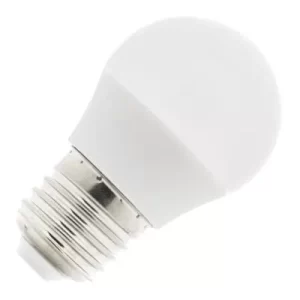
Differences between E27 and other common sockets
E27 is distinguished primarily by its size. Other common types include:
- E14: Smaller (14 mm diameter), common in decorative luminaires such as night lamps or sconces.
- E40: Larger, mainly used in industrial lighting.
- B22: No thread, but a bayonet system with two side pins. It is common in some countries outside continental Europe.
These differences influence compatibility and the type of lamp in which they can be used.
What is the E27 thread and how to recognize it?
The E27 thread is easily identifiable by its cylindrical shape and visible spiral pattern. It is usually found in standard shaped bulbs such as the A60, but also appears in decorative designs. Recognizing this thread helps to avoid mistakes when buying light bulbs, as often only the type of socket is indicated.
Dimensions and shape of the E27 socket
The socket has a diameter of 27 mm and a cylindrical shape with spiral thread, which ensures a firm and efficient connection. E27 bulbs can vary in height (generally between 60 and 130 mm), depending on type and design, especially in LED versions that optimize space and heat dissipation.
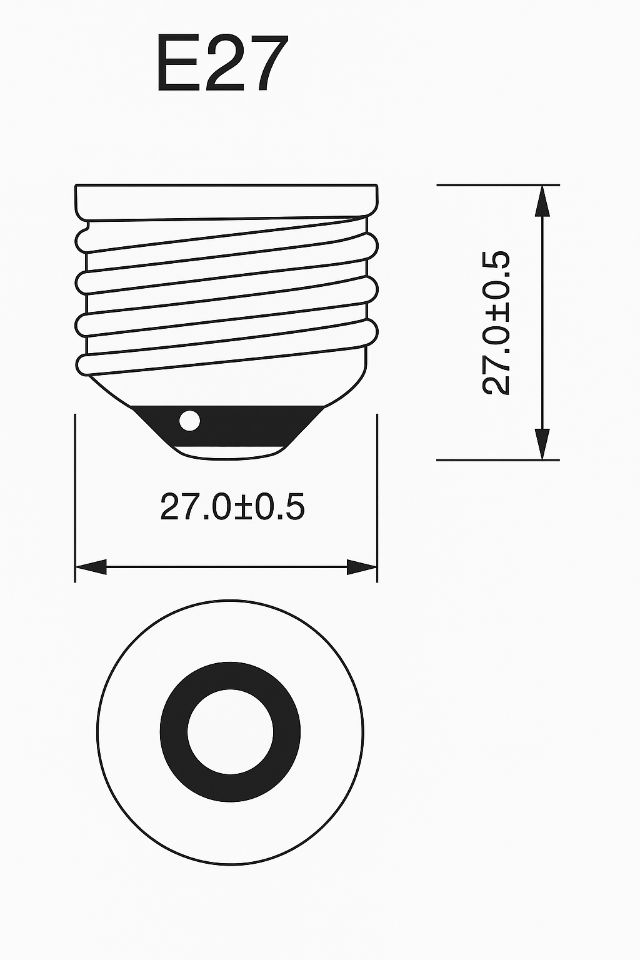
Lamp and lampholder compatibility
E27 is practically a universal standard in all types of bulbs. It is found in all types of luminaires: pendant, ceiling, tabletop, sconces and more. Compatible sockets are made of materials such as plastic, ceramic or metal, and adapters are available to convert other sockets (such as E14) to E27, increasing versatility without the need to change the lamp.
Main features of bulbs with E27 socket
E27 bulbs stand out for their versatility. They are available in multiple technologies, such as incandescent, halogen, compact fluorescent (CFL) and, of course, LED. The latter are the most recommended for their energy efficiency, long life and low power consumption.
The main characteristics of a bulb with an E27 socket include:
- Variable power: from 3W to 100W or more, depending on the type of technology.
- Shades of light: warm white (2700K), neutral white (4000K) and cool white (6500K).
- Dimmable: many versions allow light intensity control with compatible dimmers.
- Decorative designs: globe, vintage or filament models, spherical, candle, among others.
- Smart connectivity: models compatible with Alexa, Google Home or app control.
Thanks to this diversity, E27 bulbs adapt to all types of environments and needs. You can use them both to generally illuminate a room and to create an intimate atmosphere with warm, dimmable lights.
Recommended products
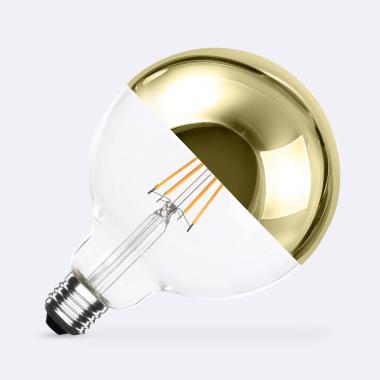
In Stock, delivery in 15-20 days
4.89 £
E27 LED Bulb 8W G125 800 lm Gold Reflect
View product
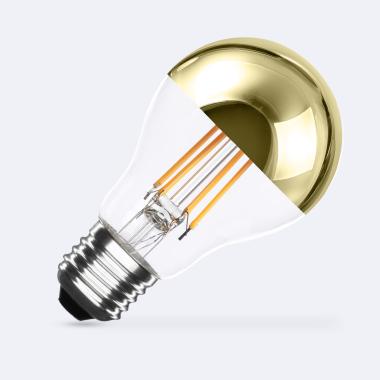
In Stock, delivery in 24/48h
1.91 £
E27 LED Bulb 8W A60 800 lm Gold Reflect
View product
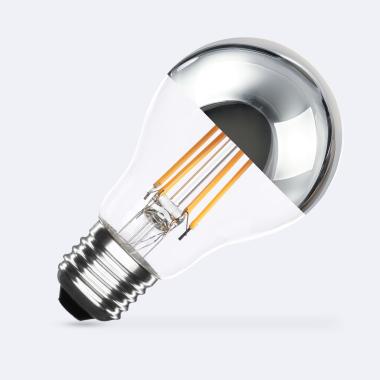
In Stock, delivery in 24/48h
1.37 £
E27 LED Bulb 8W A60 800 lm Chrome Reflect
View product
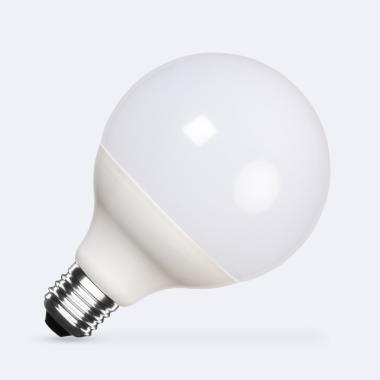
In Stock, delivery in 24/48h
3.49 £
E27 LED Bulb 15W G95 1500 lm
View product
Common uses of the E27 socket in the home
The reason the E27 socket is so popular in the home is its versatility. This base fits most common light fixtures perfectly, making it the preferred choice for almost any type of residential lighting. Whether you’re remodeling your home or simply replacing an old bulb, chances are you’ll end up using an E27.
In addition to their ease of installation, E27 bulbs come in a wide variety of styles and color temperatures, making them perfect for a variety of needs – from warm light to create a cozy ambiance to bright white light for work areas.
In which rooms are they most commonly used?
The E27 socket can be found in virtually every room in the home, but there are certain spaces where its presence is especially common due to the need for powerful general lighting:
- Living room or sitting room: here ceiling lamps with E27 bulbs are usually used, since a uniform light is sought that illuminates the entire room. It is also common to see floor lamps with this socket.
- Bedrooms: Bedside table lamps, ceiling lamps or even reading lamps use E27 bulbs, especially if a warm, relaxing light is desired for the evening.
- Kitchen: Although most kitchens already use downlights, it is still common to see luminaires with E27 socket.
- Dining room: In many cases the pendant lamp over the dining table uses E27 filament bulbs.
- Hallways and entrances: E27 bulbs are also used here in soffits or wall sconces, looking for constant and uncomplicated lighting.
This distribution demonstrates the enormous adaptability of the E27 socket for all types of environments within the home, combining functionality and aesthetics.
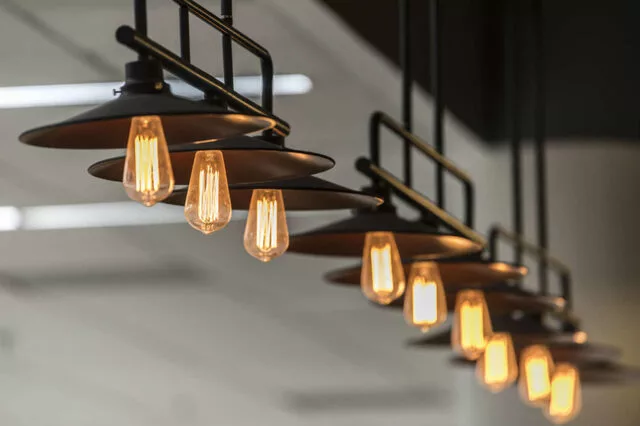
Compatible lamps and wall lights
Another advantage of the E27 socket is that it adapts to a wide variety of luminaires, both modern and traditional. These are some of the most common:
- Ceiling fixtures: most indoor soffits and pendants are designed for E27 bulbs. This includes minimalist, rustic, industrial and classic designs.
- Floor and table lamps: Widely used in living rooms and bedrooms, these lamps accept E27 bulbs because of their size and easy maintenance.
- Wall sconces: Whether in the hallway, bathroom or sheltered outdoor areas, many standard sconces are prepared for E27 sockets.
- Outdoor lighting: There are lanterns, garden luminaires and porch lamps that also use E27 bulbs, especially when looking for weatherproof LED options.
Even some decorative or themed luminaires, such as garlands of bulbs or industrial-style lamps with metal grilles, are designed for E27 sockets because of their convenient size and large supply of designer bulbs.
Frequently asked questions about the E27 socket
Here are some of the most common questions we receive about E27 bulbs.
What happens if I use an E27 bulb in a different socket?
If you try to put an E27 bulb in a different type of socket (such as E14 or GU10), it won’t work because it won’t fit properly. You may even damage the socket or the bulb if you force the installation.
Can I use LED bulbs with E27 socket?
Yes, in fact it is one of the best combinations currently available. LED bulbs with E27 socket are economical, efficient and durable. In addition, they are available in different light shades and wattages to suit any home or office environment.
Are there smart bulbs with E27 socket?
Yes, many brands offer smart bulbs with E27 socket. You can control them from your mobile, change the color, program them or synchronize them with your music. They are perfect if you are creating a home automation system in your home.
Key conclusion on how to use the E27 socket correctly
By now it is clear why it is one of the most widely used formats in domestic and commercial lighting. Its standard size, ease of installation and great compatibility make it an almost foolproof choice for those looking for functionality and versatility in their luminaires.
To ensure the best use of the E27 socket, keep these key tips in mind:
- Always verify the socket type before purchasing the bulb.
- Opt for LED bulbs for greater energy efficiency and durability.
- Consider smart bulbs if you want advanced control features.
- Make sure the wattage of the bulb is appropriate for the socket.
- Use adapters only when strictly necessary and with caution.
In summary, the E27 socket remains the king of lighting for good reason: it’s practical, reliable and offers a huge variety of options for all tastes and needs. Whether you’re looking to illuminate a kitchen with bright light or create a cozy corner in your living room, there’s a perfect E27 bulb waiting for you.


